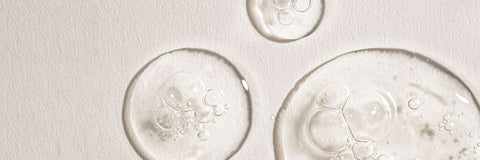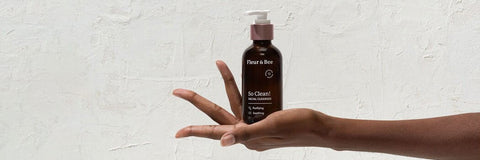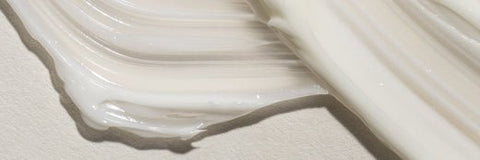With all the skincare products on the market, it can be hard to know which can work together successfully. So, how do you know when you’ve got too much of a good thing? For example, AHAs and BHAs (Alpha Hydroxy Acid and Beta Hydroxy Acid) are two of the most effective exfoliators out there, but can AHA and BHA be used together?
The short answer is yes, but it is important to understand how they work and how to properly use them. In this article, we’ll discuss whether AHA and BHA can be used in skincare together, the difference between AHAs and BHAs, and everything else you need to know about these very effective exfoliating acids.
IN A NUTSHELL
Main Takeaways: AHAs and BHAs are chemical exfoliants that can easily be used together with great success.
Good to Know: No matter how you use AHAs and BHAs, it’s incredibly important to follow up with a sunscreen during the day, as exfoliation makes the skin more vulnerable to sun damage.
Recommended Products: Prince Charcoal Detox Mask.
What are AHAs and BHAs?
If you’re not familiar with AHAs and BHAs (Alpha Hydroxy Acids and Beta Hydroxy Acids), they are both acids that can be used on the skin. Used mainly– but not exclusively– to exfoliate, they help remove dull, dead skin from the surface. This allows new, healthy skin to shine through, and other products, like moisturizer and makeup, will go on more evenly. That said, AHAs and BHAs accomplish different tasks and offer different benefits, so let’s look at what they do and how they do it.
What are AHAs?
AHAs, or Alpha Hydroxy Acids, are water-soluble acids that help exfoliate the top layer of skin to reveal healthy, new skin. Found naturally in milk, fruits, and sugarcane, AHAs make skin look younger and more radiant by working to diminish the appearance of fine lines and wrinkles. Although the term “acid” may sound intimidating, AHAs are generally considered very gentle. Not only do AHAs exfoliate the top layer of skin, they also hydrate the skin by locking in moisture.
Glycolic acid is a great example of an AHA. It both exfoliates the skin and hydrates it as a humectant. This means it helps draw moisture from the deeper levels of the skin up to the top layers, plumping up dry skin while helping reduce the appearance of fine lines and wrinkles.
If you really want to see glycolic acid in action, try our Prince Charcoal detox mask! This “spa in a jar” lifts out impurities, smooths and nourishes your skin. We recommend masking with this clay mask one to three times a week, depending what your skin needs.
In general, those with dry, mature, or sensitive skin will benefit most from AHAs like glycolic acid, as they are gentle on the skin and impart hydration. AHAs are great for dealing with flaky skin caused by dryness. That said, any skin type can benefit from AHAs, including oily or combination skin.
What are BHAs?
BHAs, or Beta Hydroxy Acids, are another kind of acid that’s used on the skin. BHAs come from different kinds of bark; and although they also exfoliate like AHAs, BHAs are a tad stronger, working deep in pores and unclogging them thoroughly. Because they are a stronger working acid, it might take a little more time for your skin to adjust to them. A little flaking or even an initial breakout is not uncommon as your skin is ridding of impurities.
An example of one of the most effective and popular BHAs on the market is salicylic acid. Found in many exfoliants, it unclogs pores on a serious level, taking with it dirt and oil. While it is OK to use it every day, it can easily irritate your skin and is best to only use it when needed.
Those with oily skin highly benefit from BHAs like salicylic acid, because they are so effective at unclogging pores and keeping skin free of the oil that tends to irritate oily skin. They’re also great for dry skin, as they allow moisturizer to work much more effectively.
Can AHAs and BHAs be Used Together in Skincare?
By this point, you might be wondering if you can use both AHAs and BHAs together. The short answer is yes! In fact, they can give skin the 1-2 punch with a surface cleaning (that would be the AHAs) and then going much deeper into the skin (enter BHAs.)
AHAs and BHAs perform two different jobs when it comes to treating your skin. AHAs remove the dead skin that’s sitting on the top layer of your face. BHAs are more aggressive, literally loosening up the bonds that hold dead skin together for a much deeper cleaning.
That said, if you do start using an AHA and a BHA together, don’t be shocked if you find your skin peeling a bit at first. When you first start using any product, you may find that you need to let your skin adjust to it. This is especially true of exfoliants. If you do find that your skin is irritated or flaky, simply cut back usage and allow more time in between treatments.
However, one step that you must absolutely take when using either or both exfoliants is applying sunscreen before you go outside. Getting rid of old, dead skin makes skin look healthy and radiant, but it also makes it more vulnerable to skin damage. Protect your freshly revealed skin with the proper SPF.
We recommend allowing at least 27 days for a product to work its magic; so if you can put up with a little flaking, it will be worth it to have healthy, glowing skin in the end.





